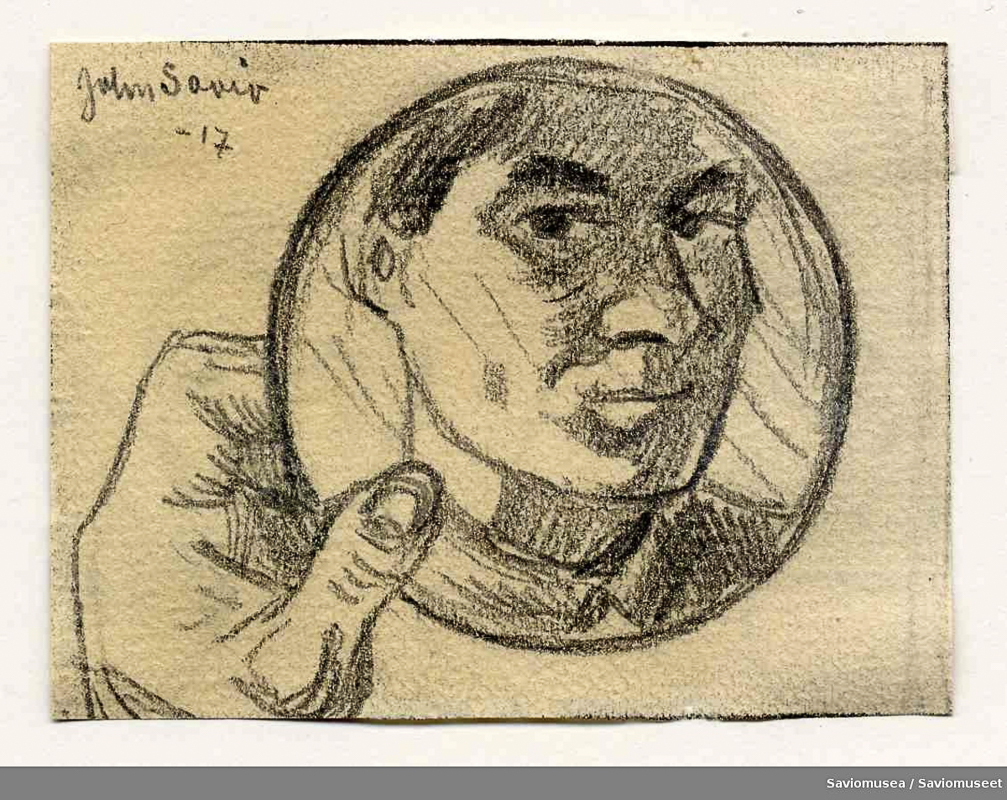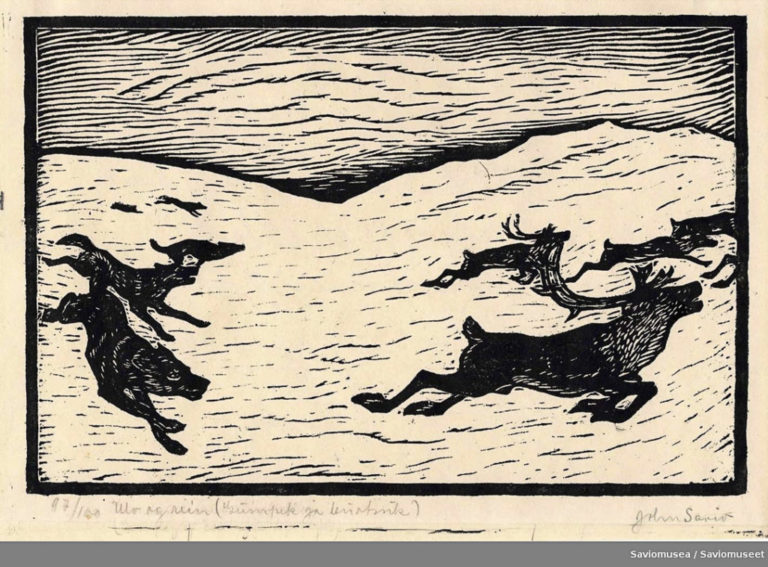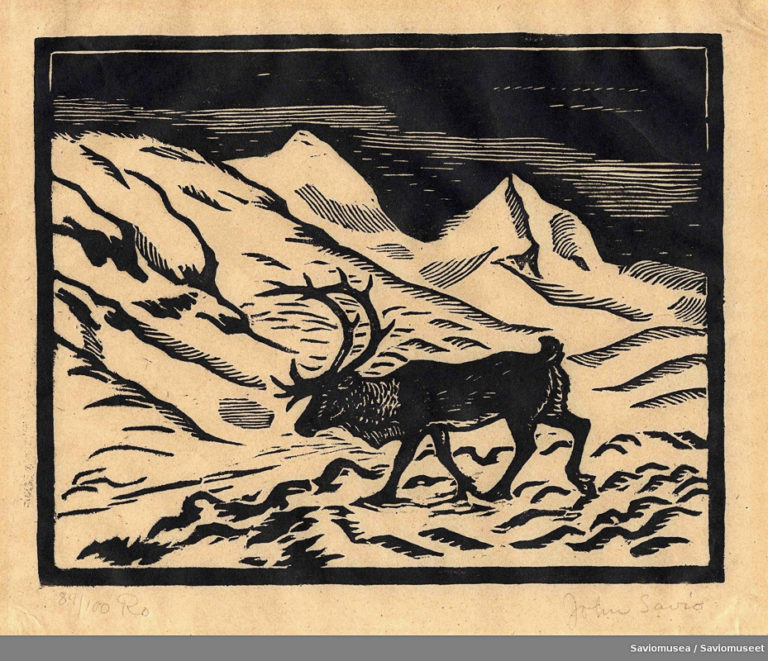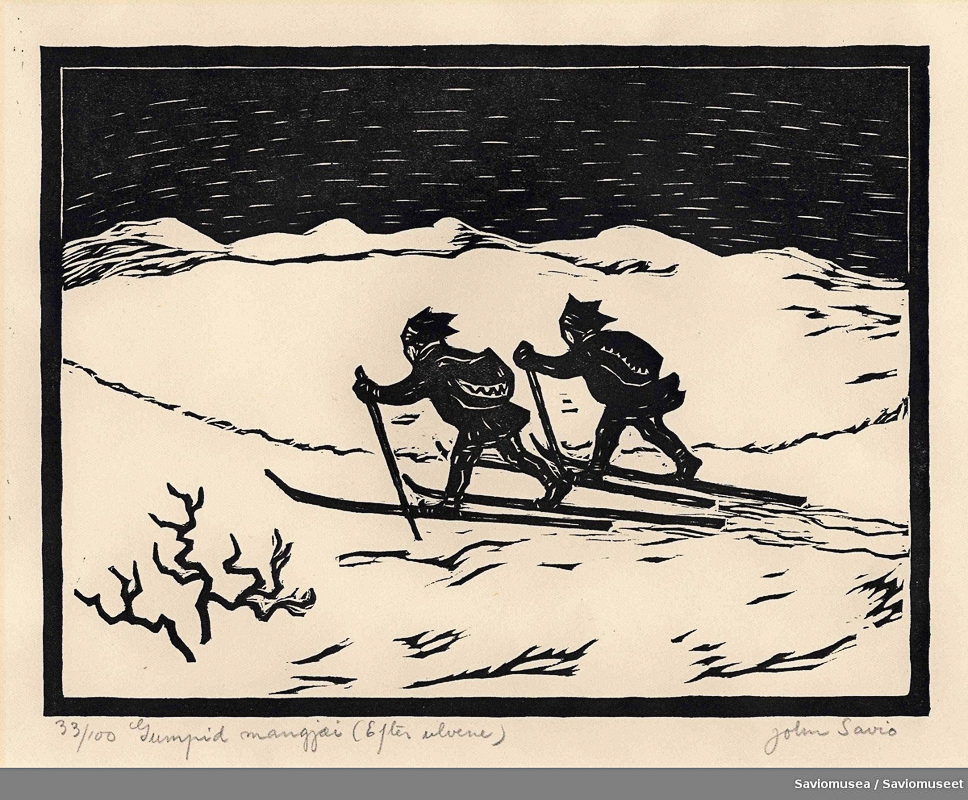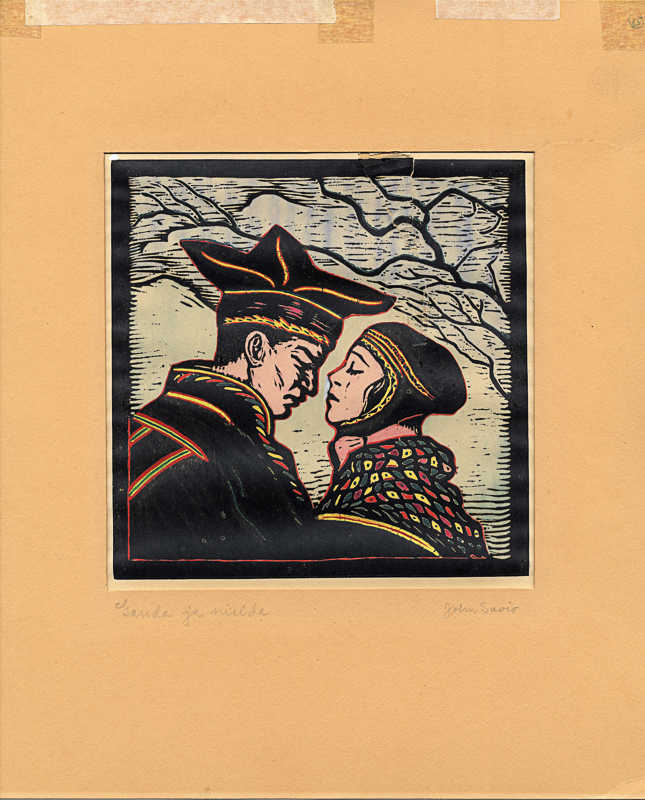John Savio’s woodcuts were the first modern Sami artistic expressions and give us an outstanding artistic insight into Sami daily life since the early 20th century. Today, Savio is known and loved across Northern Norway, but his life was characterised by illness and poverty. The Savio Museum (Savimuseet) in Kirkenes houses an impressive Savio collection, and is the best place to learn more about him.
Strong, simple woodcuts were John Savio’s trademark. Reindeer on the plateau, wolves, Sami spitz dogs, lone trees; he has an unmistakable streak, despite considerable variation in the motifs and his technical and motif-related development over the two decades when he was active. He also worked with paintings
Savio was born in fairly wealthy family
John Savio was born in 1902 into a fairly wealthy Sami family. His father participated in the South Pole expedition, where he excelled with his survival skills, while his mother was a grocer’s daughter from Bugøyfjord. In 1905, Savio’s mother died due to illness, and his father died on the way to Vadsø where he was to collect a coffin for her. John Savio was then brought up by his grandparents.
John Savio lived in various places
His grandparents were enterprising and wealthy traders, reindeer owners and fishermen, and as such could afford for John to have an education. John attended middle school in Vardø, and became acquainted with the Sami member of parliament Isak Saba as his teacher, who inspired Savio to make use of his talent for drawing. A self-portrait of him from 1917 has been preserved. He then attended Bodø Gymnas school in Bodø, where his drawing took priority over other subjects.
Oslo
John Savio moved to Oslo (Kristiania) to complete his secondary education, where he also attended evening classes at the Norwegian National Academy of Craft and Art Industry (Statens håndverks- og kunstindustriskole). However, the long days began to take their toll, and the tuberculosis he had contracted back home steadily worsened. In 1921, he underwent a major lung operation, but he would continue to suffer from tuberculosis for the rest of his life.
Karasjok, Lofoten, Romsdal
During the 1920s, Savio travelled extensively throughout Norway. He had very little money and often went from door to door selling his woodcuts very cheaply. It was because of this that John Savio’s artwork ended up both in private homes and public institutions. He also pawned paintings in return for money and other assistance to help support himself. These paintings were not signed or dated, and therefore placing them chronologically can be challenging.
Munich, Cologne, Paris and Kaffistova
In 1934, Savio travelled around Europe. He visited Munich and Cologne, and stayed in Paris for an extended period. He held an exhibition in Paris in the summer of 1936, which received honourable praise. Savio then returned to Oslo, where he lived in a small attic room that he could barely afford. He spent a lot of time at the Kaffistova cafe, frequented by many other “hungry artists” from Northern Norway, while staying away from the established art world.
John Savio is buried at Vestre Gravlund cemetry
Savio’s health steadily worsened during the winter of 1937–38. His final picture was signed with a close-fisted pen of a friend because he was so ill, and in April 1938 Savio died. He was buried in an area for paupers in Vestre Gravlund cemetery. Two memorial exhibitions, in 1939 and 1941, were organised following his death with over 400 works by Savio on loan from a long list of owners.
Dürer, Japan and expressionism
John Savio sought inspiration from artists such as Edvard Munch, Nikolai Astrup and the major French expressionists. Japanese art and the renaissance graphic artist Dürer were other sources of inspiration. Savio’s position in international art has as yet not been adequately explored. Savio has an individual way of expressing both inner and outer emotions. Ganda ja nieida, gutt og jente, one of Savio’s best-known pictures, shows two Sami lovers and is full of suppressed emotion. Loneliness is a key motif, and we can only assume that Savio felt alone as is depicted in the woodcut Okto.
